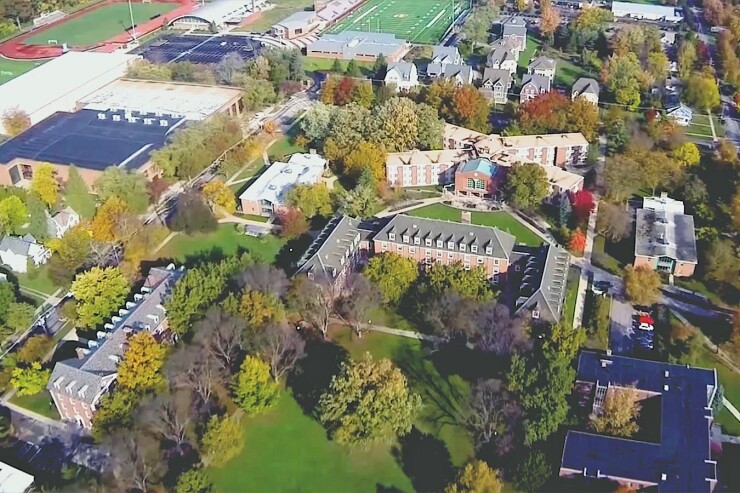Oberlin College saw its outlook reduced to negative from stable because of declining enrollment and weaker financial performance.
S&P Global Ratings changed the outlook on its AA rating for the private liberal arts college in Ohio Thursday and said that any further weakening in the school's finances and failure to return to historical operating performance could pressure the rating on $200 million of debt. The school has no current plans to increase its debt.

“Oberlin has been facing what we consider enrollment softening for the past few years which has only recently increased to a materially significant level,” Ashley Ramchandani, S&P's primary credit analyst on Oberlin College. “The declines are attributable to a number of factors, including changes to the college’s recruitment practices and transition to a new VP of Enrollment upon the retirement of the former VP of Enrollment in August 2017.”
Oberlin isn’t alone in facing the challenges of declining enrollment. Ramchandani said that declining demographics in the Midwest and some other regions as well as increased competition are common themes in higher education, particularly for small liberal arts institutions.
According to S&P, total headcount at the school declined for the third consecutive year, reaching 2,853 in fall 2017, compared with 2,912 in fall 2016. Matriculation has declined in recent years, reaching 28% in fall 2017 compared with 32% in the prior year, but the school anticipates that enrollment will stabilize in the near term.
“Regarding efforts to stabilize enrollment, this was a top priority for us last year,” Ben Jones, an Oberlin spokesman, said in an e-mail. “With some additional data gathering, we were able to address more directly some of the concerns prospective students had about things like location and outcomes, and we also incorporated our faculty more directly into yield activities. I am pleased to report that as a result of these efforts we will welcome this fall an incoming first-year class that exceeds our enrollment target, and we expect this pattern to continue.”
The college has experienced significant turnover in senior leadership in recent years. Oberlin named Carmen Twillie Amber as the new president in September 2017, after hiring Meredith Raimondo as vice president of enrollment in August 2017. Rebecca Vazquez-Skillings will be joining the college as of July 1 to serve as vice president of finance.
S&P’s action follows a similar move by Moody's in October last year. Moody’s revised the outlook on its Aa3 rating to negative from stable because of “unanticipated enrollment volatility,” it said.
In December Moody’s Investors Service changed its outlook on the higher education sector to negative from stable over weaker revenue growth. The rating agency said in a report that smaller private universities will continue to face the most tuition revenue pressure and will continue to struggle to differentiate themselves in a crowded market.
“After Moody’s downgraded all of higher education from stable to negative this past December, [S&P’s] development did not come as much of a surprise,” Jones said. “We are aware of the concerns related to the higher education financial model and are working to address them in order to ensure Oberlin's financial stability for the decades ahead.”
Oberlin has issued debt through the conduit Ohio Higher Educational Facility Commission.
Oberlin anticipates a modest deficit of approximately $3 million on a full accrual basis for fiscal 2018 on a consolidated basis. “The college has relied on high endowment draws ranging from 5.4% to 6% in the past few years to offset operating deficits,” S&P said. The school has a sizable endowment of roughly $820 million as of June 30, 2017.
S&P said that the school doesn’t expect additional endowment spending in fiscal 2018 and is counting on significant cost savings from various expense management controls including a voluntary separation program initiated in fiscal 2016.
“The school has implemented various cost savings measures in recent years including expense controls, leaving certain vacancies open, and implementing a voluntary separation package in fiscal 2016,” Ramchandani said. “We further understand they are still experiencing cost savings from this endeavor.”
The purpose of the program is to expedite voluntary attrition with the goal of decreasing long-term operational costs. Projected savings will be between $2.5 million to $3.5 million annually. It was offered as an opportunity for those who were considering retirement but were uncertain about timing due to financial concerns. The school said that 98 employees accepted the offer for early retirement, representing 30% of all those who were eligible.





